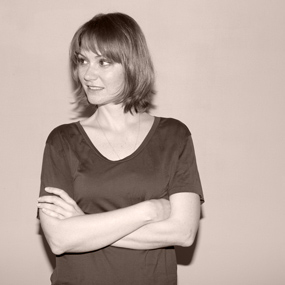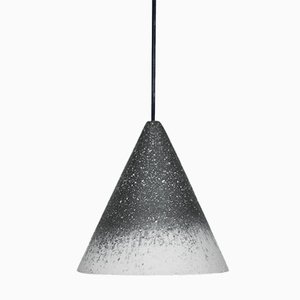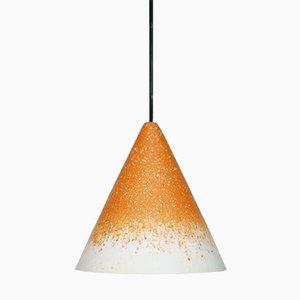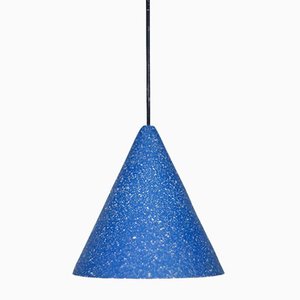Maria Foerlev’s Copenhagen gallery embraces the gray areas of 21st-century design
Daring in Denmark
Maria Foerlev knows design from all angles. She’s studied design history and connoisseurship, architecture practice, business finance, and communications. She’s traveled extensively and held a number of positions promoting, branding, and editorializing design, both historic and contemporary. Her blogs and Instagram account have attracted an impressive following. Armed with all this knowledge and experience, what conclusions have Foerlev drawn about today’s design landscape? Well, that neat conclusions, as such—strict definitions about the difference between art and design—just don’t apply to the most compelling creative production now.
And this perspective isn’t just a matter of mere words for her. In 2013, she launched Etage Projects in her hometown of Copenhagen, a city that spawned some of the most beloved design objects of the last century. Foerlev’s gallery is dedicated to bringing Danish design into the 21st century. Since we’ve grown more and more intrigued with each exhibition announcement she’s put out, we decided to get in touch with Foerlev to hear more about her mission.
WC: What is your background, and what prompted you to start Etage Projects?
MF: I studied art and design history at Sotheby’s Institute in London. After that, I studied architecture at the Danish Royal Academy; then moved to Johannesburg, South Africa, where I lived for 2 years. When I came back home to Copenhagen, I couldn’t really choose between the fields of art, design, and architecture. Lucky for me, many people who work in these fields today are the same; they can’t decide either. So this crossover area—this gray area—became my focus.
WC: Are you a design collector yourself? Do you live with many of the pieces you present?
MF: I do live with pieces that interest me, and therefore also the things I present in the gallery. Everything in my home has a story connected to it and evokes some memory or emotion. But I am not a “thing person.” What interests me most in this business are the people, the ideas, and how our surroundings ultimately affect us.
WC: How would you characterize the design scene in Copenhagen?
MF: Quality and value are in Denmark’s design DNA—in the legacy of the golden age of Danish design, in the ‘50s. This spirit is still alive, but, among the younger generation, I see less focus on the rational aspects of design. A segment has begun to break free of the old expectations and has torn itself from design conventions, with more fearlessness. It takes courage to break away from classical design and find equilibrium in the gray area between art and design.
WC: How do you choose the artist-designers you work with?
MF: Gut feeling is number one; a sense of mutual ambition and chemistry is also important. In order to rely on my intuition, I spend a lot of time researching, visiting studios, travelling to fairs. Generally, I have all antennae out there.
I have found that many designers and architects want to do more than pure function—they want to create change and broaden awareness. Some artists want to engage the intimacy that designers experience when an audience interacts with their designed objects. There is a need for design to have a functional, utilitarian purpose. There is a need for art to have a poetic psychology. But there is also a need for them to be together. That is what motivates me.
WC: Your website mentions that the artist-designers you work with "question received models of practice and exhibition.” How are you hoping to move forward the conversation around contemporary creativity?
MF: I like to question things, and I don’t mind confusion. The process is so much more interesting to me than the conclusion. I hope to present interesting objects that evoke emotion and thought. This whole debate—can design be art or art be design?—it’s great! Etage Projects does not take a stand on the issue. However, I do believe we should question the term design, which nowadays has become an abused word, deprived of all the social implications initiated by the Bauhaus school. Rather than design, I want to reflect on objects and the stories and reflections they produce.
WC: Do you commission new pieces from the artist-designers, or do you choose from existing works?
MF: I have now begun to commission new work for Etage Projects. I didn’t at first—it’s best to know your partner well before you start making babies. Also, that aspect of the business requires a whole other set of skills than “just” being able to spot a talent and curate nicely. But I’m ready now.
WC: What are you working on now? What’s next for you?
MF: My next exhibition is with Swiss duo Kueng/Caputo—I’m very excited about that one! I’m also expanding the space here in Copenhagen, in order to get a permanent showroom in addition to the exhibition space. Too many beautiful things were hidden in the basement, and now, finally, I will have the space to show them all. Can’t wait!
-
Text by
-
Wava Carpenter
Seit ihrem Studium in Designgeschichte an der Parsons School of Design hatte Wava schon in vielen Bereichen der Designkultur den Hut auf: sie lehrte Designwissenschaft, kuratierte Ausstellungen, überwachte Auftragsarbeiten, organisierte Vorträge, schrieb Artikel und erledigte alle möglichen Aufgaben bei Design Miami. Wava lässt den Hut aber im Büro – auf der Straße bevorzugt sie ihre Sonnenbrille.
-






